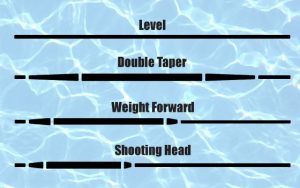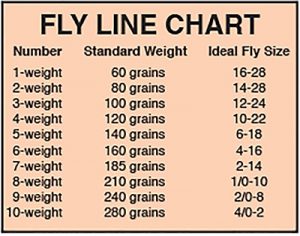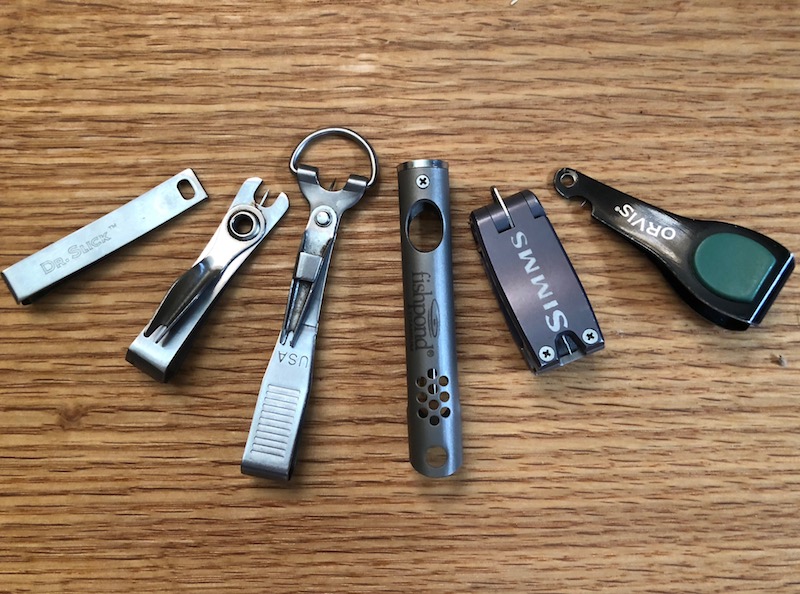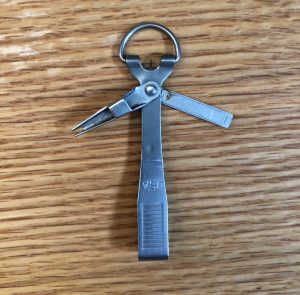
When I first got into fly fishing, I didn’t have any money. At that age, you simply had to get what you could get when you could get it. That usually meant holding out until birthday or Christmas. I had a cheap rod and reel outfit and a box of flies. My fishing “vest” was my uncle’s old Marines shirt with the sleeves cut off. The bellows pockets on the front were plenty big to hold my one fly box and any other accessories. And I had a pair of fingernail clippers, Trim brand, hung around my neck on a piece of fly line. My wading gear consisted of cutoff Duckhead shorts and an old pair of Asics running shoes.

I slowly started to accumulate better gear. But it wasn’t until much later that I even considered buying actual wading gear. On the smallmouth streams of central Kentucky where I cut my teeth, it just wasn’t necessary. And when I did eventually start fishing the 50-degree tailwaters for trout, I guess I was just too young and full of testosterone to notice the cold. That changed when I waded the Cumberland River tailwater one rainy November day and somehow narrowly avoided hypothermia. On the top of my list the following Christmas was a pair of neoprene waders and rubber soled wading boots. I didn’t know much about felt soles and thought the rubber soled boots would be more durable.
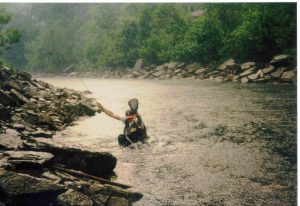
In the mostly cobble-bottomed tailwaters where I was fishing, the rubber soles were adequate. All was right in my fly fishing world… until I went to the Smokies. That first trip to the Smokies provided me with countless views of the sky as I spent nearly every moment on my back. I’d get up, take a step, then slip again. Seems that even the best waders don’t keep you dry when they’re full of water! It didn’t help that my first Smokies trip was to Abrams Creek. It’s possibly the slickest stream on the planet. But it definitely made me begin to question my choice in wading gear.
I soon replaced the rubber-soled boots with felt, and eventually began wearing breathable waders when they hit the market. And I quickly realized why countless fly fishermen chose felt soles and had been doing so for decades. They are vastly superior to rubber when it comes to providing traction on slick, rocky stream bottoms. As a matter of fact, at the time, major fly fishing companies like Orvis didn’t even offer a rubber sole option in their catalog.
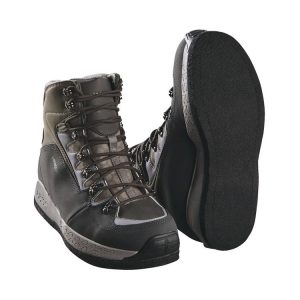
Fast forward about 30 years and look at an Orvis catalog, web site, etc. You’ll find almost all rubber sole wading boots with only one or two felt alternatives. Why the change? The spread of exotic organisms from stream to stream.
While there are a number of different ways these exotics can be spread, many scientists pointed to felt soles as a big culprit and one that could be controlled. It sparked a movement where some
Felt Soled Boots popular fly fishing destinations added boot cleaning stations at select river access points, a few states went as far as banning felt boots, and fly fishing companies began aggressively looking for alternative bottoms to their boots.
The result has been a variety of different tread designs, all created on a Vibram rubber sole or variation thereof. Some companies, like Simms, even went so far as to discontinue production of felt sole boots entirely, while most manufacturers chose to offer both. After a short time, likely due to a significant dip in sales, Simms returned a couple of felt sole options to their product line. The problem was, despite companies’ claims that these new soles were as good as felt, many fishermen didn’t agree. In fact, some fishermen in “felt ban states” even took the whole, “I’ll quit
Typical Vibram Soles wearing felt boots when they pry them from my cold, dead feet” approach!
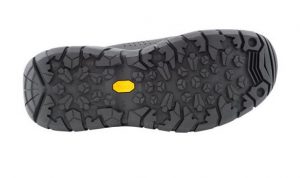
To be fair, all of these new rubber sole designs are quite different and way better than those rubber sole boots I had 30 years ago, and they’re light years better than an old pair of running shoes. They even offer some real traction advantages to felt when it comes to trail use and scrambling up and down banks.
But the fact is, they are nowhere near as good as felt when it comes to providing traction on a slick streambed. I suppose you could just call that an opinion but I like to think it’s based on more than just preference as I routinely field test many of these new boots. As part of my field-testing, I will spend some days on the water wearing the rubber sole on one foot and a felt sole on the other. Time and time again, the rubber sole slips in places where the felt does not.

An alternative is to wear rubber soles with studs. This is probably the closest thing I’ve found to felt as far as traction on the stream bottom goes. However, these have a real tendency to slide and slip on dry rocks, posing another safety risk if you do a lot of rock hopping on smaller streams like we have in the Smokies. The other downside to studs is that they are noisy. That’s probably not a big deal on a larger, deeper, swift river, but if you’re trying to sneak up on a pool in a smaller, shallower headwater
Vibram Rubber Soles with Studs stream, you’re going to spook a lot more fish.
So, we’re kind of left with this whole responsibility vs. practicality debate. Most younger and/or newer fly fishermen are readily going with the rubber designs – some probably because they’re the current, cool thing, and others probably because they don’t know any better. They’ve never worn felt so have no basis for comparison. It’s the guys that have been around (like me) that are the problem. For us, trendy new designs aren’t nearly as important as staying upright!
Okay, maybe trendy designs aren’t that important to me, but being a responsible fisherman is, and that’s where it gets tricky. As an environmentalist, I take it very seriously. I certainly don’t want to be responsible for the spread of exotic organisms, but again, I do want to stay upright. As someone who wades creeks every single day, I need to be as sure-footed as possible not only for my own safety, but sometimes for the safety of my clients. Fortunately, with a little planning and/or extra effort, you can wear felt soles responsibly.
The biggest issue with felt is that it dries slowly. So, if you pick up some weird organism in one river system and go to another totally different river system the next day, you could transport that organism with you because it can stay alive in that wet felt. As soon as the soles dry, any organism you pick up will likely die. For most fishermen who are fishing no more than once a week, those soles have plenty of time to dry. Even so, it’s a good idea to clean them to be safe.
For someone like me, who is on the water every day, my soles almost never completely dry until the end of the season. But I don’t worry too much about it because I am constantly going to the same “system” of streams. I’d be picking up something in Little River and transferring it back to Little River! When it is a concern for me is when I’m going to be in the Smokies on Tuesday, the Clinch River tailwater on Wednesday, and back to the Smokies on Thursday. Then I run the risk of transferring something from the Clinch to the Smokies.
My solution for this is multiple pairs of boots. I have one pair of studded rubber boots for tailwaters and another pair of felt soles for the mountains. But if you don’t want to purchase two pairs of boots, you want to own felt soles, and you might want to fish the Clinch one day and the Smokies the next, cleaning your boots in between trips is a must. Many experts will tell you that if you’re fishing multiple river systems in consecutive days as described above, thorough cleaning is the surest way to prevent the spread of exotics, even with rubber sole boots. So it’s just a good habit to get into.
Again, some popular areas actually have cleaning stations for this purpose. There is one at Little River Outfitters in Townsend. It’s accessible whether the store is open or not. Or if you’re going to clean them at home, thoroughly hose the boots off with water and soak them for about 10 minutes in a solution of about 5% bleach and hot water. I’d also recommend scrubbing the soles with a wire or stiff bristled brush. Then rinse one more time with the hose.
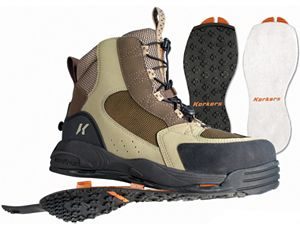
If you’re planning a multi-day fishing trip somewhere and will be fishing numerous river systems, just throw your soak bin, brush and solution in the car and you’ll be ready to go. If you’re going to a state where felt is banned, you can certainly wear felt and take your chances with the law, but that’s a pretty big risk. Yellowstone National Park just implemented a felt ban and the
Korkers Boots with Interchangeable Soles penalty can be up to 6 months in jail and a $5000 fine. All of a sudden, the cost of a second pair of wading boots doesn’t sound so bad, does it?
Again, that’s the solution that works best for me. Or you might consider one of the Korker boot models that have interchangeable soles. You can quickly change from felt soles to rubber soles on the same boot.
As with everything I write, this is just one man’s opinion with a few facts mixed in here and there. Find a legal and responsible system that works for you. If you currently wear rubber soles and like them, by all means stick with them. If you mostly fish streams with a more cobble type bottom (like many tailwaters), you’ll probably be happy with rubber. For freestone mountain streams with larger, more slippery rocks, felt is tough to beat and continues to be my preference.
However, I am keeping an open mind and continually looking for that next great felt alternative. Technology and design for felt-alternative boots is getting better every year. I hope to personally be able to make the switch soon.


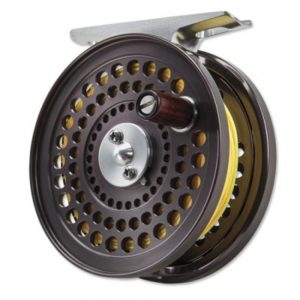

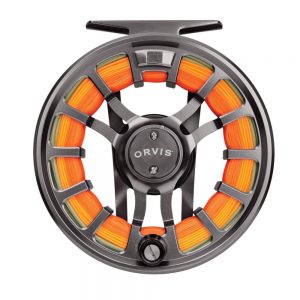
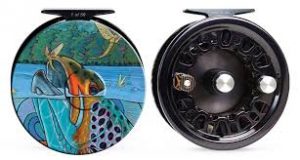
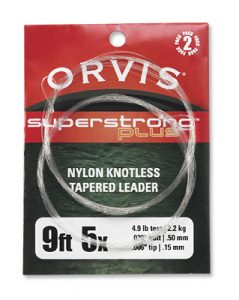
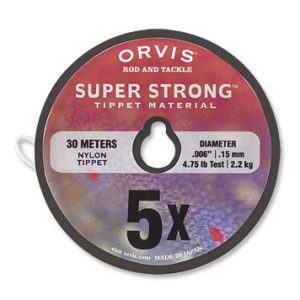

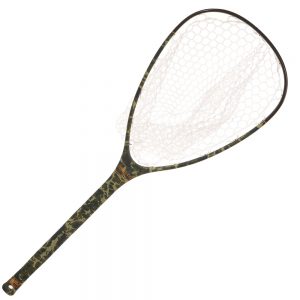
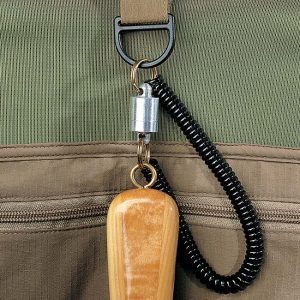

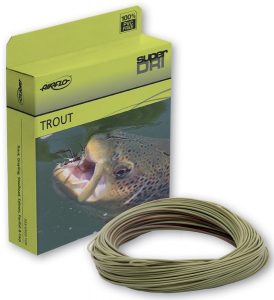 We use virtually weightless flies in fly fishing. Many float on the surface of the water. Even weighted flies that sink don’t have enough weight to carry themselves any sort of distance. We use the fly line for that. In essence, the fly line replaces the weight of a lure. When spin fishing, a weighted lure carries a weightless line when cast. In fly fishing, a weighted line carries a weightless lure.
We use virtually weightless flies in fly fishing. Many float on the surface of the water. Even weighted flies that sink don’t have enough weight to carry themselves any sort of distance. We use the fly line for that. In essence, the fly line replaces the weight of a lure. When spin fishing, a weighted lure carries a weightless line when cast. In fly fishing, a weighted line carries a weightless lure.